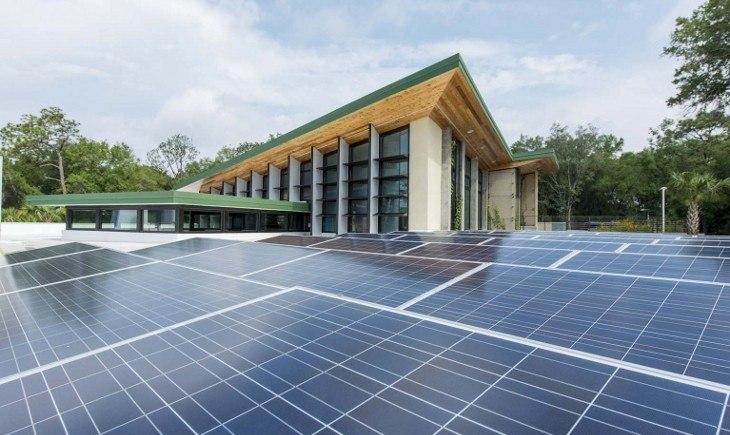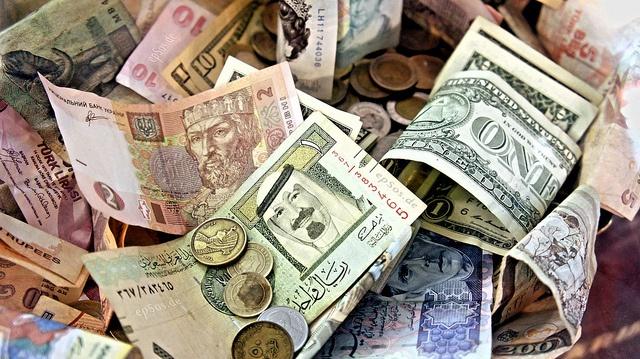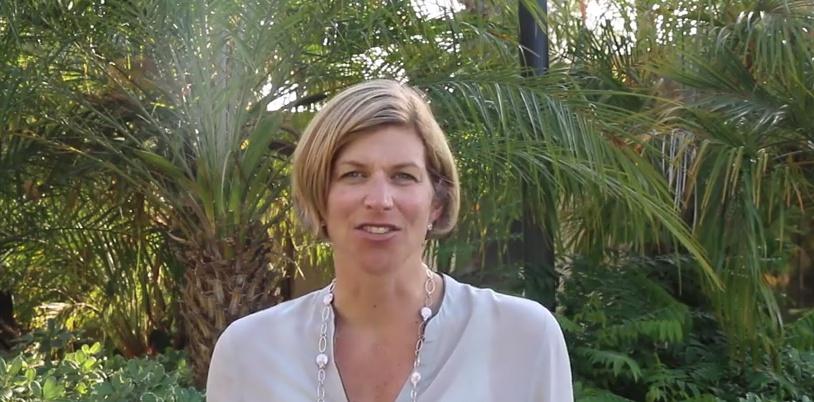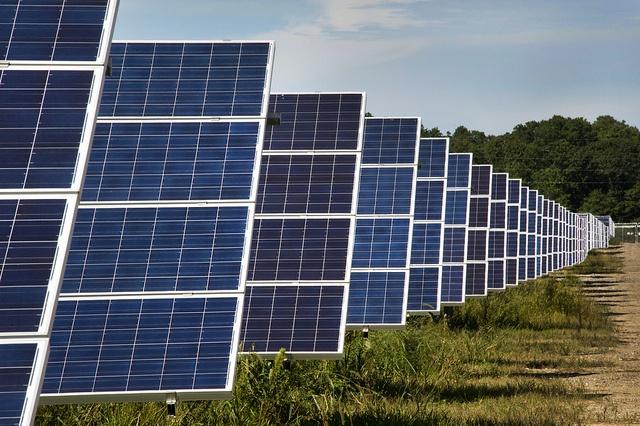Environmental protection key business asset says customer survey


Four out of five customers would act against a company impacting natural World Heritage Sites such as the Great Barrier Reef, finds a new survey by WWF.
The survey, part of the #SOSReef WWF campaign to achieve greater protection for one of the best known World Heritage Sites, the Great Barrier Reef, was carried out in six countries to explore the public’s attitude to these areas.
In the UK, it found that 58% of respondents have a worse opinion of businesses carrying our industrial activities within the Great Barrier Reef World Heritage Site, and almost as many - 53% – have a worse opinion of the banks and financial institutions that lend to these businesses.
Chris Gee, WWF-UK #SOSReef Campaign Leader, said: “This poll shows that the protection of the Outstanding Universal Value of natural World Heritage Sites like the reef is a high priority for consumers. Businesses that are, or might consider, putting precious natural World Heritage at risk should treat this as a serious business risk.
“WWF also notes that in the UK part of the results, banks and financial institutions that lend to such businesses are considered almost as liable as those they fund. Banks and financial institutions would be wise to find ways to demonstrate to their customers and investors that they are acting to ensure the protection of our natural World Heritage globally.”
How Childhood Play Fosters the Creative Workforce of Tomorrow


Seeing children at play makes most people smile. In a world dominated by electronic entertainment, it's harder than ever to get kids to be active and use their muscles. But the benefits of play extend much further than improving children's health.
There is a critical connection between play and 21st-century skills like creativity, problem-solving and collaboration, says James Siegal, president of Kaboom!, a nonprofit organization that has built more than 2,400 playgrounds nationwide since 1996.
“Play is critical for building higher-order cognitive and creative skills," Siegal told us. "Imaginary play is them creating whole worlds; it’s them figuring out how to make sense of the world around them and how they do that in collaboration with others ..."... Behind that play is the critical element of how early brain development happens. It enables kids to grow up and continue to be creative throughout their lives."
While 2-year-olds are creative, he explained, young adults entering the workforce are less so. Continued play is crucial for children to exercise their creative muscles well into adulthood.
Creativity and the business case for play
Siegal is not alone in making this correlation. At the 2013 Lego Idea Conference, Lego Foundation CEO Randa Grob-Zakhary talked about the steep drop in creativity in adults. We as a society lack the vision and outside-the-box thinking to tackle important problems. Grob-Zakhary believes that creativity is crucial to problem-solving, and helping people be more creative can help us all realize our full potential.
There is no shortage of experts lamenting the lack of exercise and playtime kids are getting these days. Kaboom!’s mission to bring play to all kids is an easy one to get behind. Indeed, the organization has rocketed skyward with an annual budget of $27 million in under 20 years and a long list of corporate supporters lining up to fund their playground projects and supply volunteers to lend a hand.
Over 1 million volunteers have helped Kaboom! build play spaces in 200 cities, impacting more than 7.4 million children. They are excited to participate in the building of playgrounds, and since it is such a wide-reaching program, employees in several locations can participate. That is the attraction for CarMax, one of Kaboom!’s corporate partners.
“Thousands of CarMax associates have poured concrete, spread mulch, painted murals, put together swing-sets and slides, and built springy cars."As a growing company, our foundation's leadership wanted to have a focus and national partnership that would allow for a common experience for our associates across the country. Associates who have built in cities like Phoenix, Chicago, Atlanta and Richmond, all have a common experience that connects them in helping kids live happier, healthier lives nationwide,” said Mac Stuckey, CarMax Foundation president.
While employees are gaining satisfaction during the actual process of building a playground, they are not only adding value to the community, but they are also adding value to their own company by making the community more attractive to prospective employees and also helping to retain current colleagues through a positive volunteer experience and stronger community infrastructure.
Now that Kaboom! has ample manpower and passion, it is looking to municipalities to get on board. Just as cities are now realizing the benefit of bike lanes and walkability, Siegal explained, Kaboom! wants them to also realize the importance of playability.
While the bike-lane movement has improved health and local air quality by reducing traffic, bike lanes are of limited use to kids. Siegal pointed out that 80 percent of the population in the U.S. is in urban or metropolitan areas, and that's only growing. The percentage of kids is even higher than that, at 82 percent.
"We look at that demographic trend, alongside the great momentum that biking and walking initiatives have gotten, and our concern is that when we are doing large-scale planning at the city level, we are missing out on a huge opportunity to provide kids with the exact things they need to be successful in life because we're not focused on development from a family and kids perspective," Siegal explained.
By focusing on childhood development with play-based initiatives, communities can improve health outcomes for children and set them up with the critical thinking skills that will be necessary in tomorrow's workforce.
Recognizing (and overcoming) the barriers
The tough thing about play is that, in most instances outside of a green space attached to a dwelling, it has to be planned. The playground is a destination.
Walk by a neighborhood park and see benches full of parents and caregivers who had to decide on a playground outing, carve out time in the day, pack snacks and appropriate clothing, travel to the playground, scout out bathrooms and then, finally, play. Although the end result is beneficial, Siegal said, the barriers are real, especially for lower-income families who might have less time outside of work, use public transportation or have to travel farther to find a playground.
Siegal believes that play should be integrated into daily routines, so it isn’t an activity that has to be planned. It should be available where people already are. Kids should be able to play not only at playgrounds, but also at bus stops and doctors' offices. Take a time or space where parents struggle to entertain their children, and give them the opportunity to play. Solve a problem for the parent and turn it into a playable moment.
Adding more playable space to cities makes them more attractive to families, which are a big economic factor in cities.
"A lot of cities have done a great job of attracting millennials and it has been a critical component of economic revitalization. But what we hear from mayors is that, while that has been crucial and essential, it is not sufficient for the sustainability of their cities, and they need to keep families in cities," Siegal explained.
This ties back to corporations in an important way. Cities rely on corporations to support their tax base, which means corporations can play a big role in shifting the cities where they reside.
"It's in the early stages," Siegal says, "but it's one of the things that gives me hope and optimism that the corporate community can be a critical driver for the change that we want to see in cities, and it aligns so fundamentally with their business interests, which to me is an indication that there is the potential for true sustainability."
Add in corporate volunteers to build these playgrounds with the help of an NGO like Kaboom! and it comes full circle as communities, companies, brands, volunteers and families all benefit.
Kaboom! began by building playgrounds for children, but as the intersection between individuals, companies and communities it has become so much more.
Image credit: Kaboom!/Facebook
3 Architects Who are Converting Your Waste to Buildings


Tomorrow's cities, some architects say, won't be dependent on the sustainable materials we can create in the future, but upon the waste we've accumulated in the past.
From paper cartons to steel hulls big enough to house several apartment buildings, the waste that we generate each year on the planet is staggering. And while much of that material finds itself into recycling projects or are sold for other purposes, some architectural designers are asking whether we're using the materials -- and the manpower, energy and carbon emissions it takes to break them down to base components -- in the best way possible.
"Endless stocks of material are already in the cities regarded as waste. Making this (re-) source available, the value-chains of construction products and materials have a great potential for increased ecological and economic efficiency," state architects at ETH Zurich University, which has been exploring ways to integrate today's most under-appreciated refuse into tomorrow's most intriguing (and usable) designs. Everything from PET bottles to discarded beverage containers have a place in ETH's palate of sustainable tools.
And they aren't the only innovators to come up with this idea. The concept of "trash techtonics," as one design studio calls it, is gaining ground -- exploring new ways to rethink the concept of sustainable, enduring architecture.
The paper pavilion made from waste
Plasticized beverage containers like milk and orange juice cartons are still a major component of landfill waste in many parts of the U.S. In 2005, an estimated 10 billion plasticized paper containers made it into the dump, largely due to the mixed media that is necessary for this type of packaging.
Fortunately, one manufacturing company has realized this is a boon for the construction business. REWALL has found a way to compress these materials into tiles that can then be used to cover interior walls.
But as is often the case, its discovery also led to another innovation that, in turn, may help transform the way we look at municipal design.
Last month, ETH, headed by Prof. Dirk E. Hebel, featured the ETH Future Garden and Pavilion concept at New York's Ideas City event. "In the future there will be no waste," said Hebel. It's a bold statement, but given how difficult it has been in the past to find ways to repurpose the average orange juice container, he may just have a point.
The floatable city
As the demand for oil drops, says architect Chris Collaris, so will the need for the massive oil tankers that have transported petroleum across the globe for years. An industry of sorts already exists for deconstructing discarded tankers, but the process is expensive, timely, high in carbon emissions and comes with a high mortality rate. On the shorelines of countries like Pakistan and Bangladesh, impoverished workers do the seemingly impossible for about $3 a day, deconstructing some of the world's biggest ships into smaller components that can then be sold off as scrap. Pollution and injury are frequent risks of the trade.
The Dutch architect believes there's a better way to reuse these ships that will both ensure the tankers aren't abandoned at the bottom of the ocean and cut down on housing demand. Collaris is trying to get metropolitan areas along the Arabian Peninsula to think of these tankers as extensions of their cities, where small metro centers can take the place of further new construction. He has developed a series of drawings of different ways that the takers could be used for housing, shops, community events and other purposes. Here in the West, using old ships for restaurants, houses and museums is a common phenomena. It will be interesting to see if Collaris' idea for the mega-vessel catches on.
The technical side of trash
Converting waste to architecture isn't a new idea for the New York/Virginia-based team of McDowellEspinosa. In fact, the two architects have already created a term for it: Trash Techtonics. The concept was the springboard for a studio of the same name. Students explored how waste could be used to create walls and other structures. Empty PET bottles, tightly-rolled newspapers and ancient vinyl records serve as the building blocks to new housing structures.
"What if we eliminate the need for raw material and banish all waste? What if design was to occur simultaneously with building?" ask McDowell and Espinosa. They are questions that architects across the globe are now asking as they consider ways to convert the world's most impractical discards into building blocks for tomorrow's homes.
Images of the proposed Black Gold floatable city: Courtesy of Chris Collaris, Ruben Esser, Sander Bakker and Patrick van der Gronde.
Images of roofing made from LPs and walls made from condensed newspaper rolls: Courtesy of McDowellEspinosa.
Interfaith Power & Light Gets a Charge from Pope's Encyclical


For 15 years and counting, Interfaith Power & Light (IPL) has worked to turn people of all religious faiths onto the idea that addressing climate change by deploying renewable energy technologies. Renewables can not only deliver clean, affordable electrical power, they say, but it can also address unemployment and spur socially beneficial development in communities nationwide.
San Francisco-based IPL received a big boost in the form of Pope Francis's encyclical on climate change, which the Pope presented in a crowded St. Peter's Square at the Vatican on June 18.
The people's rally that took place during the Pope's presentation gave “quite powerful witness that Jews, Muslims, Christians and people of all faiths can all work together based on common interest,” IPL president and founder, Rev. Canon Sally Bingham, told TriplePundit. “The Pope is telling everyone that we all share this planet and have a moral obligation to care for each other and all God's creation.”
With a membership that reaches across some 18,000 congregations, each with around 400 members, the people-power IPL brings to the climate change and renewable energy “table” is substantial. Hundreds of those congregations have taken advantage of IPL's solar finance guide to have solar photovoltaic (PV) energy systems installed with no up-front payment. The faith-based nonprofit believes the Pope's encyclical will spur many more to do the same.
Bridging divides
Coinciding with presentation of the Pope's climate change encyclical, IPL held an interfaith panel on climate change. Webcast live, a rabbi, an imam, a Baptist, an Evangelical and an Episcopalian discussed the Pope's message and how renewable energy offers the means to address the challenges of climate change, energy, and environmental and social justice.
“We've been preaching and teaching the moral dimension of climate change for 15 years now,” Rev. Cannon Bingham told 3p. “This is a spiritual, a religious and moral issue, not merely an issue of economics and politics.
“Up until now, even people of faith that recognized we have been destroying God's creation have let money and politics trump their faith. But when someone like Pope Francis comes out and speaks so clearly and so eloquently, well, we think this will be very powerful.”
Ramping up faith-based climate change, solar energy campaigns
IPL ramped up its public outreach and educational campaigns in the run-up to presentation of the Pope's climate change encyclical. Its official release should add momentum to its climate change and clean energy initiatives. For example, IPL has launched an online campaign entitled “Many faiths, one Earth” via which Web users can sign on in support of the Pope's message.
IPL is also running an online campaign dubbed the Paris Pledge, which aims to raise public voices in calling on world leaders to agree to a strong global climate change treaty at the upcoming U.N. Framework Convention on Climate Change (UNFCCC) Conference of Parties (COP-21) to be held in Paris this December. The more than 100 IPL congregations that have made the Paris Pledge aim to reduce their carbon footprints in half by 2030 and to be carbon-neutral by 2050, Rev. Cannon Bingham explained.
Helping fuel its ongoing efforts to promote solar energy deployment across its 18,000 member congregations, IPL is running an online Solar Pledge campaign.
IPL sees prospects improving when it comes to stronger climate change action and renewable energy use in the U.S. resulting from the Pope's climate change encyclical. It may even be powerful enough to turn the tide in the U.S. Congress, where climate change deniers and the influence of fossil fuel companies to continue to squash climate change action and stronger clean energy and energy efficiency legislation, Rev. Canon Bingham said.
“Hopefully [the Pope's climate change encyclical] will be the game-changer. I firmly believe that when hearts and minds change, the politics will follow.”
*Image credits: 1) Order of Carmelites; 2), 3) Interfaith Power & Light
First Green's 'Regenerative Banking' Reaches Beyond Sustainability


Up and running for six years now, First Green Bank taps into banking's deep and self-sustaining roots in local communities while reaching beyond the concept of sustainability.
With financial backing from a diverse group of investors, the company is building a “green,” local and community-focused bank in Central Florida: a bank that prides itself on taking a new, socially and environmentally responsible approach to U.S. banking and finance. Founder and CEO Ken LaRoe and proponents have dubbed it “regenerative banking.”
Adding to the formidable challenge is the location of its regenerative community bank. The area around Orlando is one of the most “conservative” and traditional parts of a state in which speculative real estate developers, “Big Sugar,” citrus and other large business groups long ago captured -- and have since held sway over -- state politics and government.
In serving the banking needs of individuals and businesses in central Florida, First Green Bank employs a holistic business model that aims to spur environmentally and socially responsible growth. It helps that First Green Bank produces financial results significantly higher than those of its peers. That kind of performance has led its industry peers to sit up and take notice. It has also earned LaRoe Ernst & Young's 2015 Florida “Entrepreneur of the Year” award.
Supportive industry experts believe that if First Green Bank can keep it up, LaRoe and team's efforts could go a long way toward restoring public confidence not only in the U.S banking and finance sector, but also in U.S. capitalism.
Banks as powerful agents of beneficial change
The issue of sustainability – environmental and socioeconomic – has grown in stature and prominence to become a hot topic on Wall Street as well as Main Street. Sustainability, however, can imply stasis, or more simply, maintaining. LaRoe, a self-described “avid environmentalist” as well as “avid capitalist,” wanted a term that went beyond sustainability and better captured the core values that guide all aspects of First Green Bank's business.
LaRoe firmly believes that banks and financial service companies can, and should, be powerful agents for beneficial change. Joining the Global Alliance for Banking on Values (GABV), LaRoe discussed this and other issues with, among others, a Greenwich, Connecticut-based think tank and management consulting company called Capital Institute.
Capital Institute's 21st-century take on capitalism and economic growth is set out in a white paper entitled, Regenerative Capitalism: How Universal Principles and Patterns Will Shape Our New Economy. The white paper is authored by the organization's founder and president, John Fullerton, a longstanding banking industry veteran and former managing director at JP Morgan. In addition to leading Capital Institute, Fullerton is a practitioner of impact investing as principal of Level 3 Capital Advisors LLC.
Capital Institute consultants are working closely with LaRoe and his team at First Green Bank to further develop, refine and implement their evolving model of regenerative banking.
Adding another facet to their collaboration, First Green Bank is the subject of a new Capital Institute documentary series entitled, "The Year in the Life of a Regenerative Bank." Launched coincidentally with publication of this feature, you can see it online here.
Finding common cause
Though hailing from very different backgrounds and parts of the U.S., as well as very different types of banks, both Fullerton and LaRoe proved themselves adept at banking and finance. Both have made lots of money in banking, for investors and clients as well as themselves. Yet both believe, and are well aware of, evidence that there's a crisis of confidence on the part of the broad public in the U.S. financial industry, and that it extends more broadly to U.S. capitalism. At the root of this crisis is an essential sense of ethics and civic values -- or more accurately, a glaring lack thereof -- that engenders the broad public trust and credibility that remains a bank's most fundamental asset.
LaRoe was born and raised in a tiny agrarian town not far from First Green Bank's headquarters. Even as fields and citrus farms have given way to residential housing developments and strip malls, the traditional values and experiences LaRoe grew up with including diligence, thriftiness and utilizing an honest, plain-speaking manner, stay with him today.
LaRoe's “green” and socially responsible business model for First Green Bank also aims to correct some of the social inequalities that persist in the south. These values can be seen in First Green Bank's lending and customer engagement policies, programs and products, as well as in its hiring and employee development policies. Hence, the term regenerative banking seems most apt. These and other core social and environmental values are evident in First Green Bank's evolving experiment in regenerative banking.
Banking this way is a new, somewhat radical, notion. Finding businesses to lend to that espouse these principles, values and attitudes isn't easy, especially in places like central Florida. Ingrained, yet slowly changing, ideas about what to expect from a bank, as well as strongly held ideas of what and how to do business, pose a stiff challenge for LaRoe and First Green Bank's workforce.
Building a "green" community bank in central Florida
“The types of businesses and people we lend to, and the products and services we offer them is evolving,” LaRoe told TriplePundit. Progress, though at times halting and hard-won, is being made, however.
For example, LaRoe highlighted, First Green Bank has what he believes is the best home solar energy financing package of any bank in the nation. Homeowners can take out zero-down loans with 9.99 percent interest rates in order to finance installation of solar photovoltaic (PV) systems. With convenience stores prominent among its business clientele, First Green Bank is also working to further refine bank products and services that enable them to enhance sustainability.
Real estate and related lending play a large role in First Green Bank's portfolio. It's helping finance King Grove Organic, a former citrus farm that owner Hugh Kent is pouring his savings into in order to convert it to cultivation of organic blueberries.
More broadly, the LaRoe-led bank puts the values it promotes to customers into practice itself. That includes its LEED Platinum headquarters pictured at the beginning of this article. The LaRoe-led community-focused green bank also devotes a significant percentage of its lending – 15 percent – to cultural, faith-based organizations and NGOs. This year, LaRoe and the First Green Bank team are focusing on a “banking the unbanked” initiative. It's an idea that one of the bank's tellers, Jessica Schwarz, brought to the fore and is now helping develop and carry out, LaRoe explained.
“Twenty-eight percent of the U.S. population is unbanked,” LaRoe pointed out. “How can that be? That means that 1 in 3 Americans isn't being served by a bank and instead has to turn to super high-cost, and predatory, banking and financial services providers.”
This penetrates to the heart of the fundamental challenges confronting the U.S. banking industry. As the number of banks has shrunk and regulatory protections fallen away, the savings of Americans have been concentrated to as great a degree as ever in large money center banks. “Too big to fail,” their primary focus is is all too often serving themselves, multinational corporations and the super-rich. They've become increasingly disconnected from the banking and financial needs of the mass of Americans, as well as the “old school” traditional ethics and values that were more prominent in the past.
Banks were more forgiving and humane in previous generations, LaRoe pointed out. Sixteen percent of the 'unbanked' used to be banked, but dropped out, he noted. "In the old days if, for instance, if your checking account became overdrawn, you could walk away, and the bank would close the account and write off whatever they got stuck with. That's changed.
"Today," he continued, "banks rely on automated third-party credit rating and reporting systems, taking the human relationships, nuanced understanding of different situations and personal judgement out of the process.
"Banks are turning people away because of industry reporting systems. We can help them recover. We've got to stop adding to the problem and help solve it."
*Image credits: 1) Ēdi Architecture, First Green Bank; 2) Capital Institute; 3) First Green Bank
International Monetary Fund Blasts 'Trickle-Down' Economics


A new report from the International Monetary Fund suggests that the widely popular “trickle-down” economics just increases the gap of income inequality, creating injustices in almost every country. The study written by five IMF economists said that if governments want to increase growth, they should focus on helping the poorest 20 percent of citizens.
“We find that increasing the income share of the poor and the middle class actually increases growth, while a rising income share of the top 20 percent results in lower growth — that is, when the rich get richer, benefits do not trickle down,” the report said.
Trickle-down economics has been glamorized by wealthy Americans, who suggest that they shouldn’t be taxed as heavily because of their input in the economy. As the theory goes, the powerful moguls provide jobs and relinquish the money they earn back into the country in which they operate. But instead of boosting the economy by the spending power of the 1 percent, the system creates an imbalance, leaving the lower class well below the poverty threshold and the upper class even better off, according to the study.
The report analyzed 159 developed and developing economies from 1980 to 2012, searching to see how income is distributed differently in each system. It found that when the income share of the top 20 percent increased by 1 percent, economic growth slows down 0.08 percent in the following five years. Meanwhile, a 1 percent increase for the bottom 20 percent leads to a 0.38 percent increase in the country’s GDP in the following years.
Tax policies, globalization, weak trade unions and technological progress have all contributed to the widening gap of income inequality, according to the study. The IMF warns that if nothing is done to distribute the wealth more evenly throughout the lower class, then the gap will only become more apparent.
“Raising the income share of the poor and ensuring that there is no hollowing-out of the middle class is good for growth,” the IMF economists said in the report.
The report encouraged more investment in health and education policies aiming to reduce poverty. It also said more progressive taxation would shrink the gap if the fiscal policies were better enforced to not give wealthy property-owning citizens opportunities to evade their taxes and avoid losing a percentage of their large income.
The IMF’s biggest task right now is taming Greece’s unstable economy, but the approach of the global financial lender has opposed the suggestions for mitigating income inequality given in the report. The report suggests that strengthening workers’ rights decreases the gap between rich and poor, but the IMF has been pushing to ease labor market regulations.
“More lax hiring and firing regulations, lower minimum wages relative to the median wage, and less prevalent collective bargaining and trade unions are associated with higher market inequality,” the report reads.
A 2014 report from the Washington Center for Equitable Growth showed that the top 0.10 percent share the same amount of wealth as the bottom 90 percent. To put that into perspective, it’s like saying one person has the same share of wealth as 900 people. The alarmingly increasing income inequality gap is at the widest margin in the U.S. since the 1930s, when the Great Depression rocked the nation.
The IMF did provide solutions for tackling the disturbing, but manageable, income inequality differences. The report's authors said that advanced economies policies should look at raising human capital while making tax systems more progressive -- meaning the richer the citizen, the more they should be taxed. Currently, the U.S. relies on a tax bracket system that increases the percentage of taxes owed based on the citizen’s income class.
It’s yet to be seen if countries will react to the IMF economists' report and attempt to shrink the ever-expanding gap between the rich and the poor. While it’s far from Karl Marx’s even distribution of wealth, the IMF doesn’t want to see the wealthy’s wallets thicken while the poor beg for money.
Image credit: Flickr/epSos .de
Hormel Cuts Coal Emissions in China Plant


This post is sponsored by Hormel Foods. Opinions are my own.
The Chinese capitol of Beijing suffers from severe air pollution. It's plagued by the emissions of 5 million cars, as well as coal emissions and dust storms from the north. Clouds of smog can literally engulf the city. This issue was under the spotlight in the run-up to the 2008 Olympics and continues to persist.
Eliminating emissions at the source is one of the most effective ways to mitigate smog and promote human and environmental health. Sustainability was the leading driver that prompted the Hormel Foods Beijing plant to replace its coal boiler with a cleaner natural gas-fired boiler, with a goal of cutting emissions by 45 percent.
The Hormel Beijing plant has approximately 500 workers and primarily produces food products, including hot dogs, dry sausage and pepperoni. A central boiler is used to produce steam and heat for the production process, and to provide some comfort heat. The company uses the Six Sigma method and a team-based approach to make triple-bottom-line improvements.
"Environmental sustainability isn’t an individual sport – it’s a team sport," explains Tom Raymond, director of environmental sustainability for Hormel Foods. "In a team sport, people are engaged in their role and can interact with other people in their roles to get the desired result. We realize that our employees are our greatest asset and when we can get people to work within that team concept, we can get some tremendous results."
Raymond stresses the importance of having all the key players at the table early on in the planning phase. The Beijing Blue Skies Team contained both internal and external experts, working together toward the clearly identified goal of cutting emissions at the plant. Replacing the boiler was a large task, because plant operators also wanted to minimize disturbance to production, cut costs, boost efficiency and seamlessly integrate the new system from day one.
"What makes this an interesting project is the team went well beyond the challenge and said, 'Let’s use a whole-system approach and make a win-win solution for the project,'" says Raymond. "It is unique how much detail they put into it to get the biggest benefit for the project."
The team looked at the big picture to identify opportunities to most efficiently distribute heat and for heat recovery by capturing heat to minimize the use of natural gas. Economizers are used to capture the heat that would normally go up the boiler stack to preheat water. The entire project needed to cater to plant production to minimize disturbance.
Triple-bottom-line improvements have also occurred at other Hormel plants, with a similar team approach. The Dold Foods plant in Wichita, Kansas, had a goal to eliminate 39 tons of solid waste by 2020. In a plant-wide effort that embraced the concept of continuous improvement, the Kansas team was able to realize an annualized savings of 127 tons of solid waste, including opportunities to compost and recycle what had been waste materials. These efficiency innovations resulted in a staggering threefold improvement over the 2020 goal, six years ahead of schedule.
“The plant teams have demonstrated yet again that fantastic results can be achieved with hard work and a spirit of continuous improvement,” Raymond said. “It is an honor to acknowledge the leadership in environmental stewardship demonstrated by the teams participating in the Sustainability Best of the Best competition.”
Raymond praises the team approach and the contributions of employees in realizing sustainability goals. "It starts with recognizing the employees for what they are, a tremendous asset to the company," he said. "Fostering the growth, development and engagement of the employees is critical from the get-go."
Image credit: Flickr/Meng Zhang
Sustainability & Innovation: Letitia Webster, VF Corp.


At this year’s Sustainable Brands conference in San Diego, we were challenged by Janssen Pharmaceuticals to ask leaders at the conference what the word "innovation" meant to them. Then, more specifically, we asked how innovation may or may not drive advancements in sustainability. We got a terrific range of responses, which we've got documented in a series of short video interviews. You can follow along here.
In this Video, Letitia Webster, VF Corp.'s global director of corporate sustainability, talks about what "innovation" means at VF and shares a few examples of how her company is innovating for sustainability.
Problems Holding the Solar Industry Back


By Ardelia Lee
The solar industry has finally hit its stride. A new report released by the Solar Energy Industries Association shows that photovoltaics grew 11 percent over quarter four in 2014. That’s great news for solar installers and advocates everywhere.
However, solar’s growth could be even larger if the industry took some time to tackle two of the problems keeping the solar industry from reaching its full potential.
A lengthy, complicated permit process
Permitting is an essential part of the solar installation process. However, it’s a step that installers often struggle with. The permit process is often lengthy and complicated, with no clear answers for installers or authorities having jurisdiction (AHJs).
There are over 18,000 AHJs in the U.S. The permitting process varies widely between each AHJ, and it generally involves two and up to five agencies. This leads to confusion and, unnecessary delays, and resubmitting of documents. All of these factors cost installers and AHJs money.
In a survey conducted by Clean Power Finance, 24 percent of installers surveyed said they had to resubmit their plans or documents to receive a permit. Thirteen percent of installers said their AHJ’s requirements changed in the middle of the job.
AHJs have to balance safety with speed when it comes to approving permits, but some AHJs are hindering the growth of solar in their area. Because of the difficulty they have in getting permits, 36 percent of installers choose not to install solar in specific AHJs.
To expedite the permit process while maintaining safety standards, the solar industry needs to lobby for a standardized national solar permitting process. A standardized process would reduce the time and money spent on permitting for both installers and AHJs.
Using the same rules, procedures, and paperwork across the country would streamline the process and enable installers to complete projects in a timely manner. To improve the permitting process further, we could adopt an expedited permitting process for installers who have a good track record with permits.
Interconnection timeline
There’s nothing more exciting than finally being able to connect a solar system to the grid. Unfortunately, it’s not always as simple as filling out paperwork and flipping a switch. Bumbling interconnection processes have made the interconnection timeline longer and more frustrating than it should be.
When looking at distributed solar interconnection challenges and best practices, the Solar Electric Power Association discovered that part of the issue stems from the fact that fewer than five percent of utilities process 75 percent of distributed solar power interconnections. That’s a huge imbalance in work load for a select group of utilities.
To add to the problem, the application process itself is often clunky and outdated. In most cases, customers and installers lack clear guidelines and either fill out the wrong paperwork or turn in incomplete applications. Online applications are a rarity, but utilities are increasingly interested in using online applications to speed their processing times.
Currently, only 17 percent of utilities are able to process interconnection applications online. Not surprisingly, utilities that use online applications are able to process their applications twice as quickly as utilities that don’t.
On average, it takes about four weeks from the time an interconnection application is submitted to the time it’s approved. However, utilities using an online system cut that in half. They average two weeks to approval.
The lengthy, often confusing interconnection process costs installers and utilities time. It’s in both parties' best interest to streamline the application process. Utilities need to continue to transition to an online application system. Interconnection guidelines and paperwork need to be readily available to solar installers and customers.
Modernizing institutions
The common denominator in the solar permitting process and the interconnection timeline is an outdated system. Before the number of solar installations skyrocketed, the way AHJs and utilities handled applications was feasible. It wasn’t the best way to handle applications, but the volume of solar permits and interconnection applications was so low, that it didn’t really matter.
Now, however, some utility companies face a backlog of applications, and AHJs are finding it difficult to keep up with installer activity. The solar industry needs to push for a streamlined, modernized way of handling applications. It’s time to stop holding solar back.
Ardelia Lee is the lead content creator for GreenLancer. You can see more of her work here.
Image credit: Flickr/Brookhaven National Laboratory
British business at risk from 'diversity deficit' finds report


New research into the top 10,000 executives in Britain’s most important firms reveals a widening “diversity deficit” which, it maintains, risks putting UK companies at a disadvantage in domestic and global markets.
The Green Park Leadership 10,000, Spring 2015 shows that the position of ethnic minorities in leadership roles within the FTSE 100 has declined over the past year. Despite an increased corporate focus on diversity, just under two thirds of FTSE Companies (62) now have an all-white Main Board (Executive and Non-Executive Directors), up from last year (61).
The study is the second report on the top leadership levels within the FTSE 100, commissioned by the executive recruitment consultancy Green Park.
See the July issue of Ethical Performance for more.